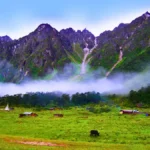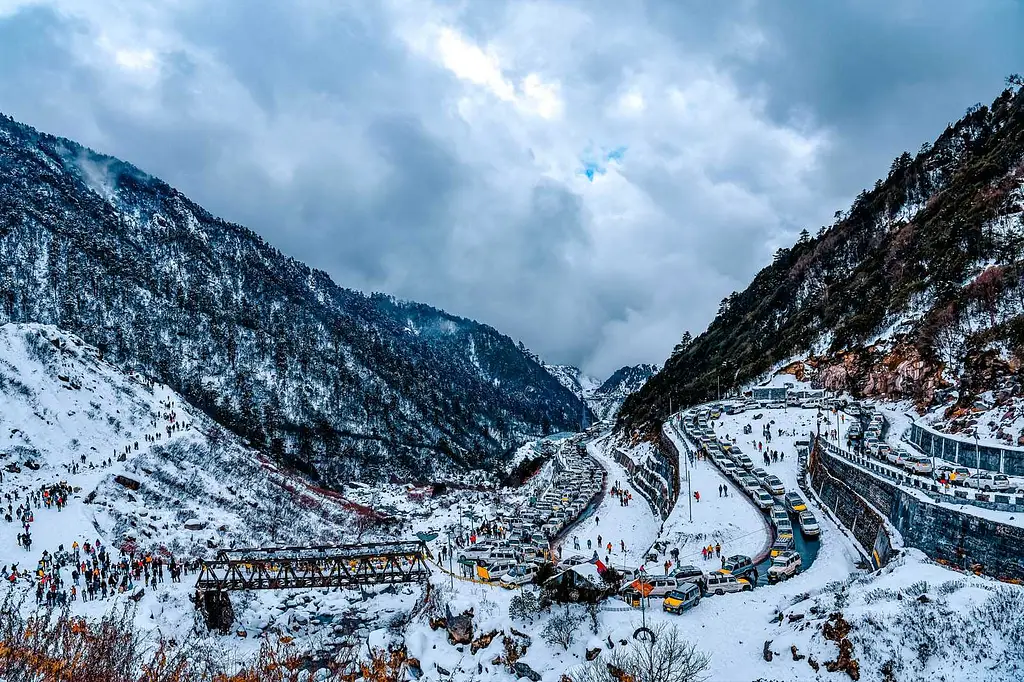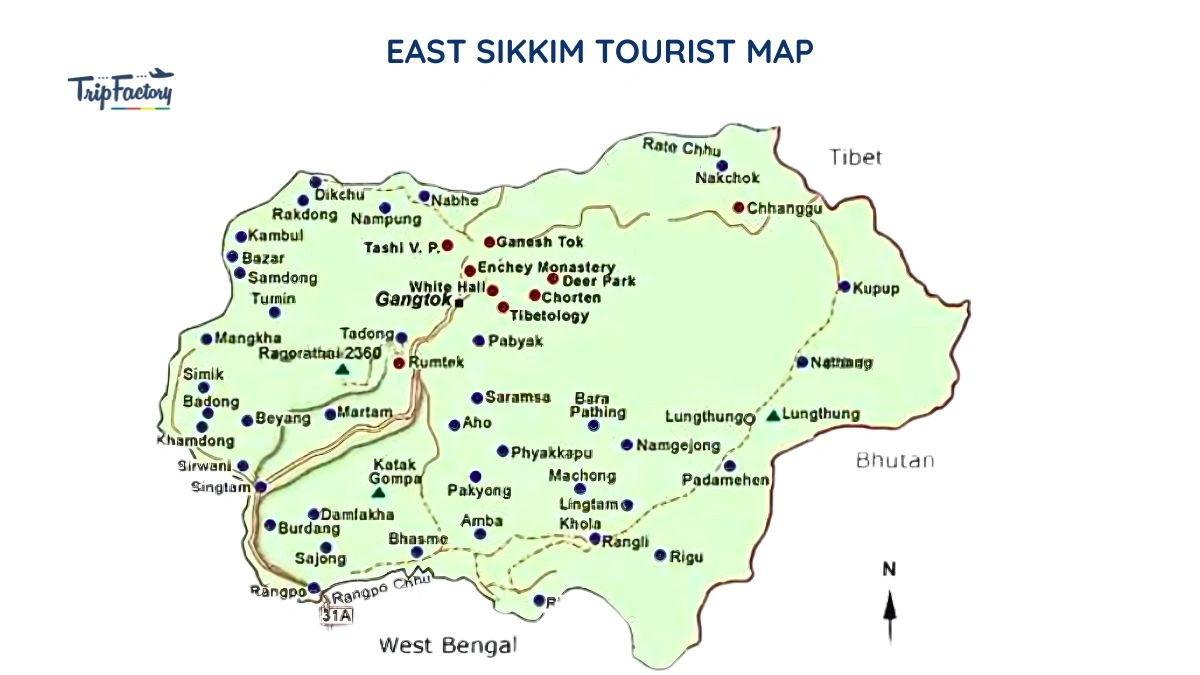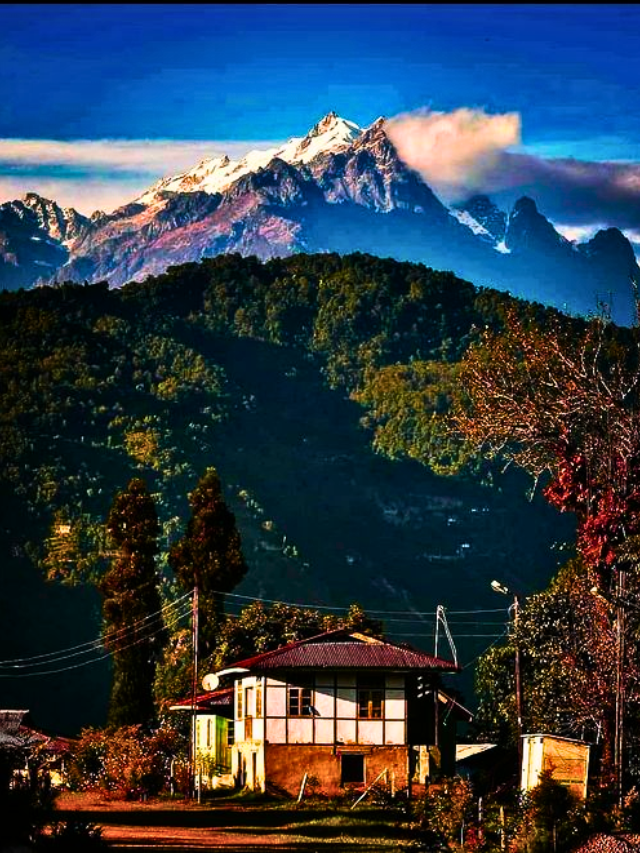A few months ago, I packed my backpack, booked a shared cab from Siliguri, and set off to explore East Sikkim. I didn’t know what to expect. I had only seen a few photos of snow covered roads,villages, and winding hills. But nothing prepared me for how special this journey would feel.
As we moved higher, the air turned cold and crisp. Prayer flags fluttered along the roads. Little children waved from wooden houses. The silence of the mountains had a strange way of calming the mind. That’s when I knew East Sikkim isn’t just a tourist place. It’s an experience that slowly becomes a memory that you hold close.
In this guide, I’ll take you through everything I learned along the way. We’ll explore the best East Sikkim tourist spots, how to make a simple and fun East Sikkim tour plan, and when to go depending on the East Sikkim weather. I’ll also tell you the perfect time to catch East Sikkim snowfall (yes, real snow!) and suggest some beautiful homestays in East Sikkim that feel like home.
If maps confuse you, don’t worry I’ll also look at a basic East Sikkim map to help you understand the route easily. And for those thinking about the top places to visit in East Sikkim, I’ll share my personal favorites that are totally worth your time.
So if you’re dreaming of snow, quiet hills, and warm smiles, this guide is for you. Let’s explore East Sikkim together one simple story at a time.
East Sikkim Travel Guide – Everything Included
How to Reach East Sikkim
When I planned my trip to East Sikkim, figuring out how to get there was the first step. The easiest way to reach East Sikkim is through Gangtok, which serves as the main gateway to the region.
By Air: The closest reliable airport is Bagdogra Airport, about 125 kilometers from Gangtok. From Bagdogra, you can hire a taxi or take a shared cab to Gangtok. The drive is scenic and gives you a chance to enjoy the hills as you approach Sikkim.
By Train: The nearest railway station is New Jalpaiguri (NJP) in Siliguri, West Bengal, roughly 125 kilometers from Gangtok. From NJP, shared cabs and taxis are available to take you to Gangtok comfortably.
By Road: For those who enjoy road travel, East Sikkim is connected by well-maintained roads. Shared cabs and buses run regularly from Gangtok to popular spots in East Sikkim like Namchi, Ranka, and Tsomgo Lake. The mountain roads are winding but offer beautiful views all along the way.
Once you reach Gangtok, local transport options like taxis or shared jeeps make it easy to explore East Sikkim’s amazing destinations.
No matter how you arrive, the journey to East Sikkim itself is a part of the adventure, setting the mood for the peaceful, stunning experiences ahead.
East Sikkim Tourist Map
Distance to East Sikkim from Different Locations
| From Location | To Location | Distance (km) |
| Gangtok | East Sikkim (Namchi, Ranka, etc.) | 40 – 80 |
| Bagdogra Airport | Gangtok | ~125 |
| New Jalpaiguri Railway Station | Gangtok | ~125 |
| Siliguri | Gangtok | ~115 |
| Darjeeling | Gangtok | ~98 |
| Kalimpong | Gangtok | ~75 |
| Lachung (North Sikkim) | Gangtok | ~120 |
| Pelling (West Sikkim) | Gangtok | ~115 |
Where to Stay in East Sikkim
When I first reached East Sikkim, finding the right place to stay felt like a small adventure on its own. I stayed in a cozy homestay in Gangtok where the family welcomed me like an old friend sharing stories, home cooked meals, and tips about the best hidden spots.
Some nights, I’d watch the mist roll over the hills right from my window. Whether you’re into simple guesthouses with that warm, personal vibe or comfy hotels with beautiful views, East Sikkim has spots that’ll make you feel right at home.
Places to Visit & Activities in East Sikkim
When I was exploring East Sikkim, every day brought something new to discover. From wandering around the peaceful Rumtek Monastery, where the quiet chants seemed to echo through time, to strolling by the calm waters of Tsomgo Lake, each place felt like stepping into a different world.
I even tried my hand at yak riding near Nathula Pass talk about an experience! If you love nature, the serene trails around Seven Sisters Waterfalls and the colorful flower gardens of Gangtok will make you pause and just breathe it all in. And don’t miss the chance to shop for some unique handicrafts at the local markets. Each item tells a story. East Sikkim isn’t just about sights; it’s about feeling every moment you spend there.
The Best Time to East Sikkim
East Sikkim is pretty amazing almost all year, but if you ask me, the months between March and June are just unbeatable. The weather feels fresh and cool, perfect for exploring without getting too chilly or sweaty.
Then, after the monsoon, from September to November, things calm down again with clear skies and lovely sunshine. If you’re into snow, visiting in the winter months December through February gives you that chance, but pack your warmest clothes because it gets cold! Each season offers something special, so it really depends on what kind of experience you want
Travel Tips
If you’re heading to East Sikkim, here are a few things I learned that might make your trip smoother. First, always carry some warm clothes, even if you visit in summer, mountain weather can surprise you! Booking your rides early is smart since shared cabs fill up fast.
Don’t forget some cash, as ATMs can be few and far between in remote spots. And, most importantly, be ready to slow down and soak in the peaceful vibe. East Sikkim isn’t just about sightseeing; it’s about feeling the place with all your senses. Oh, and try the local food momos and thukpa are a must!
Check Latest Stories:
Frequently Asked Questions
How many days are sufficient for East Sikkim?

Arrange a 6-day journey to Sikkim with NE Cab and discover the three treasures of Sikkim: Gangtok, Lachen, and Lachung. You will learn about well known tourist destinations, cuisines, cultures, lifestyles, and much more with our 6-day Sikkim Tour Package.
Why is East Sikkim famous?

When traveling to the Indian state of Sikkim, many visitors choose to stay in East Sikkim. With its peaceful lakes, gorgeous valleys, and snow-capped mountains, this area exudes breathtaking natural splendor.
When to visit East Sikkim?

March to May or October to mid-December are the ideal times to visit Sikkim, according to Sikkim Tourism. The ideal time to go is in the spring, from March to May, if you want to see the natural splendor in blossom. However, autumn offers a good glimpse of the Himalayan Range.
How many places are there in East Sikkim?

Tourist Sites in East Sikkim
Nathu La Pass, Tsomgo Lake, Rumtek Monastery, Hanuman Tok, Tashi View Point, Gangtok Ropeway, Namgyal Institute of Tibetology, Ganesh Tok, Tukla Valley, Nathang Valley, Jelep La, and several more locations.
Which is the coldest place in East Sikkim?

Nathula Pass









